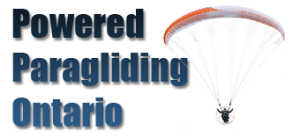June 3/13 – How to deploy rescue parachute
/in Pilot resources/by Andre ZemanOnce you have decided to deploy your rescue parachute you must follow the following sequence of operations as calmly, yet as quickly as possible:
Look at the rescue parachute deployment handle pass your thumb through the rescue parachute handle and close your fist around it open the rescue parachute outer container by pushing the handle aggressively forward to extract the rescue parachute inner container – the inner container will be attached to the release handle by 5 inch strap and will dangle under your hand aggressively swing and throw the rescue parachute inner container towards clear air pull in the D risers of your paraglider to disable it prepare yourself for the landing impact – do not use legs, stay seated and let the machine take the impact. Looking at the deployment handle is vital so that you will be certain to get hold of it on your first attempt. A second try will cost precious time.
1. Hooking the thumb through the handle is the only way that guarantees you will get hold of it, especially when flying with gloves. Practice the first two steps in the deployment procedure frequently during regular flight so that it becomes second nature. Be careful not to cause an accidental deployment.
2. Pushing the deployment handle forward allows the container to be opened progressively and completely, and to extract the rescue parachute inner container using the least possible effort.
3. An aggressive throw brings the parachute to full line extension in minimum time. The parachute must be thrown into clear air to reduce the chance of entanglement with the paraglider. If the paraglider still has forward speed in a more or less uniform direction, it is desirable to throw the parachute down and back. In the probable case that your paraglider is spinning with an asymmetric closure, throw the pod in the direction you are spinning and outwards from the center of rotation: centrifugal force will assist in getting the parachute away from you and your wing. If you are wrapped in your glider, all effort must be made to find open air before throwing. Remember that your decision to pull and throw your rescue parachute will also very much depend on your height above ground. If you are very high above ground you have time to try to regain control of your paraglider, or let it sort itself out with your pod in hand, waiting for the most favorable moment. If you are close to the ground, every millisecond is precious: act immediately. Remember that a very fast rotation can ultimately lead to your unconsciousness.
4. Pulling in the D risers, if you have enough height, will disable forward movement of your paraglider, otherwise it may have the opportunity to interfere with your parachute reducing its stability and increasing your sink rate. If you hold the Ds in one hand – always above the quick-links to be sure to do it symmetrically. If your lines are twisted – impossible to pull in the D – you can pull in as much brake lines as possible to collapse your wing; be careful to pull in both brakes symmetrically to avoid inducing your glider to spin which could be highly dangerous once your parachute has been deployed.
5. Prepare for landing by maintaining your composure and focus. Stay seated with legs as high as possible. Allow the paramotor stand, cage take the hit.
Good luck and let’s hope that you will never need this advice.
May 31/13 – Niagara Falls restricted flight area CYR 518 demystified.
/in Pilot resources, Uncategorized/by Andre ZemanDue to the restricted airspace around the Falls all aircraft must climb to 3500 ASL ft prior to entering the circuit. The circuit can be entered from SW (50) or NW (100) directions. The boundaries of this restricted space start at the Welland river on the south side and at the QEW highway so if you are flying in the area make sure that you have 3500 ft ASL before you cross these landmarks.





